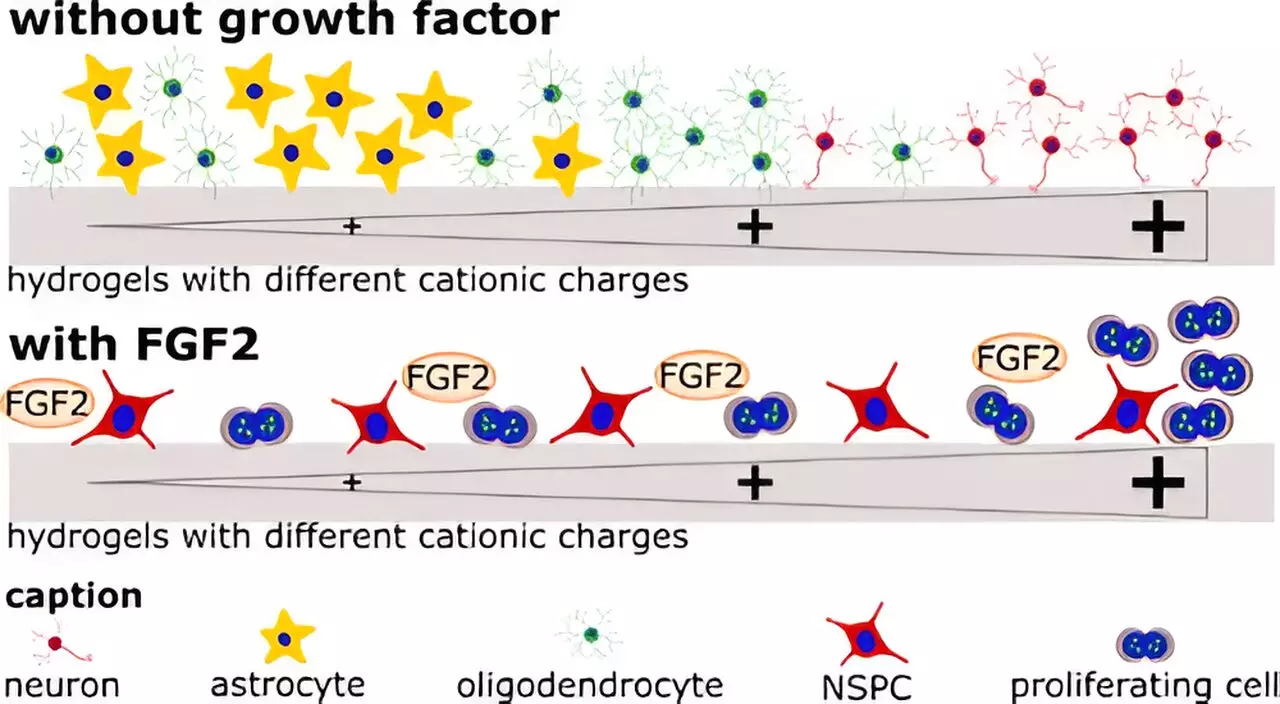Nerve regeneration is a complex process that is often hindered by the formation of fluid-filled cavities and scars in the brain or spinal cord. These obstacles prevent tissue regeneration and make it difficult for injuries to heal properly. Researchers from Ruhr University Bochum and TU Dortmund University in Germany have developed an artificial cell environment using positively charged hydrogels to promote the survival and growth of neural stem cells. This innovative approach could have significant implications for the field of medical research.
The Role of Positively Charged Hydrogels
The study conducted by Dr. Kristin Glotzbach and Professor Andreas Faissner aimed to create an artificial environment for cells that mimics the natural cell environment in the brain. The researchers used neural stem cells from mouse embryonic brains and cultivated them on positively charged hydrogels. The positively charged nature of the hydrogels allowed the cells to adhere well to the substrate, providing an optimal environment for proliferation and differentiation.
Impact on Cell Fate
The experiments revealed that the strength of the positive charge on the hydrogels could influence the fate of the stem cells. Cells cultured on hydrogels with a high positive charge tended to develop into nerve cells, while cells on hydrogels with a lower positive charge mainly developed into glial cells. This ability to influence cell differentiation could be pivotal in replacing specific cell types based on the type of injury or disease.
When the researchers added the growth factor FGF2 to the positively charged hydrogels, they observed an increase in the survival and division rate of the cells. However, the differentiation into nerve and glial cells occurred at a slower pace. Future studies plan to experiment with peptides or components of extracellular matrix molecules to further enhance the natural environment simulation of the cells. Three-dimensional gels are also being considered to fill cavities after brain injuries.
The findings of this study have broad implications for the field of nerve regeneration. The ability to manipulate the differentiation of stem cells into specific cell types has the potential to revolutionize treatments for injuries and diseases affecting the nervous system. By creating an artificial cell environment that closely mimics the natural environment of the brain, researchers are paving the way for innovative approaches to tissue regeneration and cell replacement therapy.
The use of positively charged hydrogels to promote nerve regeneration shows promise in overcoming the challenges associated with injuries to the brain and spinal cord. By providing neural stem cells with an optimal environment for growth and differentiation, researchers are making significant strides towards enhancing cell survival and controlling cell fate. Further research in this area could lead to groundbreaking advancements in the field of regenerative medicine.



Leave a Reply